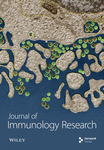Flavanols and Platelet Reactivity
Abstract
Platelet activity and platelet-endothelial cell interactions are important in the acute development of thrombosis, as well as in the pathogenesis of cardiovascular disease. An increasing number of foods have been reported to have platelet-inhibitory actions, and research with a number of flavanol-rich foods, including, grape juice, cocoa and chocolate, suggests that these foods may provide some protection against thrombosis. In the present report, we review a series of in vivo studies on the effects of flavanol-rich cocoa and chocolate on platelet activation and platelet-dependent primary hemostasis. Consumption of flavanol-rich cocoa inhibited several measures of platelet activity including, epinephrine- and ADP-induced glycoprotein (GP) IIb/IIIa and P-Selectin expression, platelet microparticle formation, and epinephrine-collagen and ADP-collagen induced primary hemostasis. The epinephrine-induced inhibitory effects on GP IIb/IIIa and primary hemostasis were similar to, though less robust than those associated with the use of low dose (81 mg) aspirin. These data, coupled with information from other studies, support the concept that flavanols present in cocoa and chocolate can modulate platelet function through a multitude of pathways.




